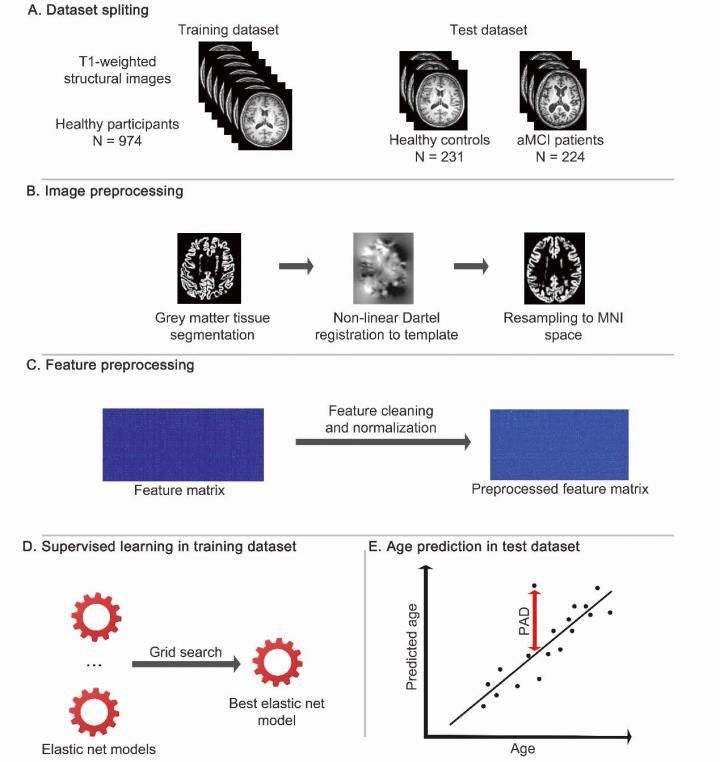AI-Predicted Age Differences Point to Early Cognitive Decline
A deep learning algorithm used with brain MRI could help providers identify patients in the early stages of cognitive decline and Alzheimer’s.
Using an artificial intelligence algorithm to identify patients whose brain and chronological ages are out of sync could open the door to earlier detection and diagnosis of cognitive decline.
Before patients begin exhibiting the signs and symptoms of Alzheimer’s disease, they enter a phase known as amnestic mild cognitive impairment (aMCI) where they experience some episodes of memory loss that are more significant than would be expected for their age and education. However, their daily functioning is still normal.
Being able to better understand how these individuals’ brains differ from those who aren’t experiencing any cognitive changes could make earlier identification and intervention with these patients easier, said a team of investigators from Beijing Normal University in China. They found that individuals with older brain ages were more likely to progress with neurological degeneration.
“The predictive model we generated was highly accurate at estimating chronological age in healthy participants based on only the appearance of MRI scans,” said the team led by Ni Shu, Ph.D., associate professor from State Key Laboratory of Cognitive Neuroscience and Learning at Beijing Normal. “In contrast, for aMCI, the model estimated brain age to be greater than 2.7 years older on average than the patient’s chronological age.”
They published their findings with their predictive model on June 22 in Radiology: Artificial Intelligence.
Based on these findings, Shu’s team determined that predictive age difference (PAD) – predicted versus actual age – has significant potential to be a sensitive imaging marker that is specifically related to individual cognitive differences in patients who have aMCI.
Flowchart showing the framework of the brain age prediction model. A, The imaging data were split into training and test datasets. The training dataset consisted of structural magnetic resonance imaging data from 974 healthy individuals, whereas the test dataset included data from 2 groups, 231 healthy controls and 224 aMCI subjects. B, A Conventional Statistical Parametric Mapping structural preprocessing pipeline was used to generate GMV maps in the MNI space. C, The intensity values from the GMV maps were extracted and concatenated to create a feature matrix that was then cleaned and normalized. D, The best elastic net model was obtained by performing supervised learning on the training dataset. To optimize the hyperparameters, a grid search was performed. E, The test dataset was input into the trained model. An age was predicted for every participant included in the test dataset. The PAD scores were calculated by subtracting the participant's chronological age from his or her predicted age. aMCI = amnestic mild cognitive impairment, GMV = gray matter volume, MNI = Montreal Neurologic Institute, Dartel = Diffeomorphic Anatomic Registrations Through Exponentiated Lie Algebra, PAD = predicted age difference.
Credit: RSNA

For their study, the team used T1-weighted MRI images captured from 974 healthy adults between ages 49.3 and 95.4 to train their machine learning model to predict brain age. They, then, implemented their model with two groups – 616 healthy controls and 80 aMCI patients from the Beijing Aging Brain Rejuvenation Initiative (BABRI) and 589 health controls and 144 aMCI patients from the Alzheimer’s Disease Neuroimaging Initiative (ADNI).
In addition to assessing the MRI images, they also evaluated the relationship between PAD and cognitive impairment, genetic risk factors, Alzheimer’s pathological biomarkers, and clinical progression in these patients.
According to their analysis, the team determined that aMCI patients had higher PADs than their healthy counterparts, and that PAD was significantly associated with individual cognitive impairment, particularly with memory, attention, and executive function. In fact, the predictive model could quantify individual deviations from the typical normal aging trajectory.
The team also discovered that individuals who were carriers of the apolipoprotein E (APOE) ε4 exhibited a much bigger PAD difference than did non-carriers. The same was true for patients who were amyloid-positive rather than amyloid-negative.
“We found that patients with progressive aMCI exhibited more deviations from typical normal aging than patients with stable aMCI,” they said, “and, the use of the PAD score along with other [Alzheimer’s disease]-specific markers had higher performance for predicting the progression of aMCI.”
Overall, the team said, when PAD scores and the other Alzheimer’s biomarkers were combined at baseline, they achieved an area under the curve of 0.87 for distinguishing between stable and progressive disease. Consequently, Shu said, it is highly possible their model could beneficially impact patient care.
“This work indicates that predicted age difference has the potential to be a robust, reliable and computerized biomarker for early diagnosis of cognitive impairment and monitoring response to treatment,” he and his colleagues concluded.
For more coverage based on industry expert insights and research, subscribe to the Diagnostic Imaging e-Newsletter here.
FDA Clears Virtually Helium-Free 1.5T MRI System from Siemens Healthineers
June 26th 2025Offering a cost- and resource-saving DryCool magnet technology, the Magnetom Flow.Ace MRI system reportedly requires 0.7 liters of liquid helium for cooling over the lifetime of the device in contrast to over 1,000 liters commonly utilized with conventional MRI platforms.
Can CT-Based Deep Learning Bolster Prognostic Assessments of Ground-Glass Nodules?
June 19th 2025Emerging research shows that a multiple time-series deep learning model assessment of CT images provides 20 percent higher sensitivity than a delta radiomic model and 56 percent higher sensitivity than a clinical model for prognostic evaluation of ground-glass nodules.